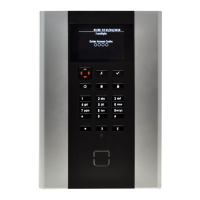Introduction
Page 4
GSM communications
Optionally, a i-gsm03 GSM module can be fitted to provide speech messaging, alarm
reporting and SMS text messaging over a GSM mobile phone network.
The GSM module also allows the system to be controlled using SMS text messages (e.g.
to set or unset the system, or to switch outputs on or off).
Note: Using the GSM module for Fast Format communications is not recommended, since
the GSM network can introduce too great a variation in the delay between signal and
response.
About Part-setting and partitioned modes
An i-on Style control unit offers part-setting and partitioned modes:
Part-setting mode
In part-setting mode, the control unit can set in one of four ways: either full set or one of
three part sets (part set B, C or D). Each zone can belong to one or more part sets (using
the Part Set attribute; see page 33). When the system is full set, the control unit sets all
zones, irrespective of the part set they belong to. When part set, the control unit sets only
those zones that belong to the part set.
Partitioned mode
In partition mode, the control unit provides the equivalent of a set of smaller, independent
alarm systems known as “partitions”. You can allocate one or more zones to each
partition. Each partition can have a full-set level and one part-set level. During system
configuration, you can allocate sirens, sounders, outputs and one-way radio keypads to
any of the partitions.
The fact that each zone can belong to more than one partition may produce un-expected
results for users of the system. When designing a system, note that a zone will only be
armed when ALL of the partitions that it belongs to are set. If a user unsets any of the
partitions that a zone belongs to, the control unit will unset that zone.
Table 1 specifies the number of partitions supported.
About radio and wired outputs
Outputs allow you to program the system to control or communicate with external
equipment when, for example there is an alarm in a specified zone, mains is disconnected
or a combination of specified conditions occur.
The control unit supports radio and wired outputs, as described next.
Radio outputs
These communicate with the control unit across a radio link. Table 1 specifies the number
of radio outputs supported.
Wired outputs
Note: The control unit's power supply does not provide 12Vdc for external output devices
during a mains failure (see Power availability on page 8).
There are two types of wired output available on the control unit's PCB:
Transistor (open collector) – By default, these are switched negative (from
12VDC to 0V) when active; you can program them to be switched positive (from 0V
to 12VDC).

